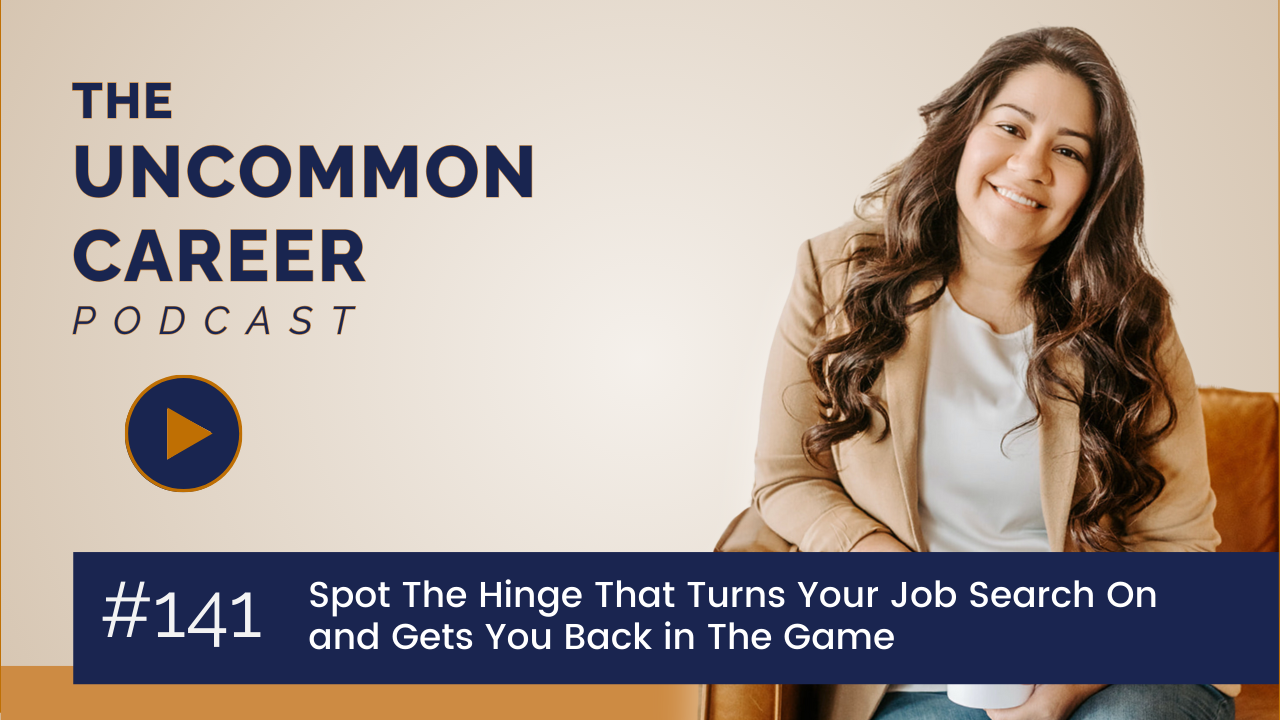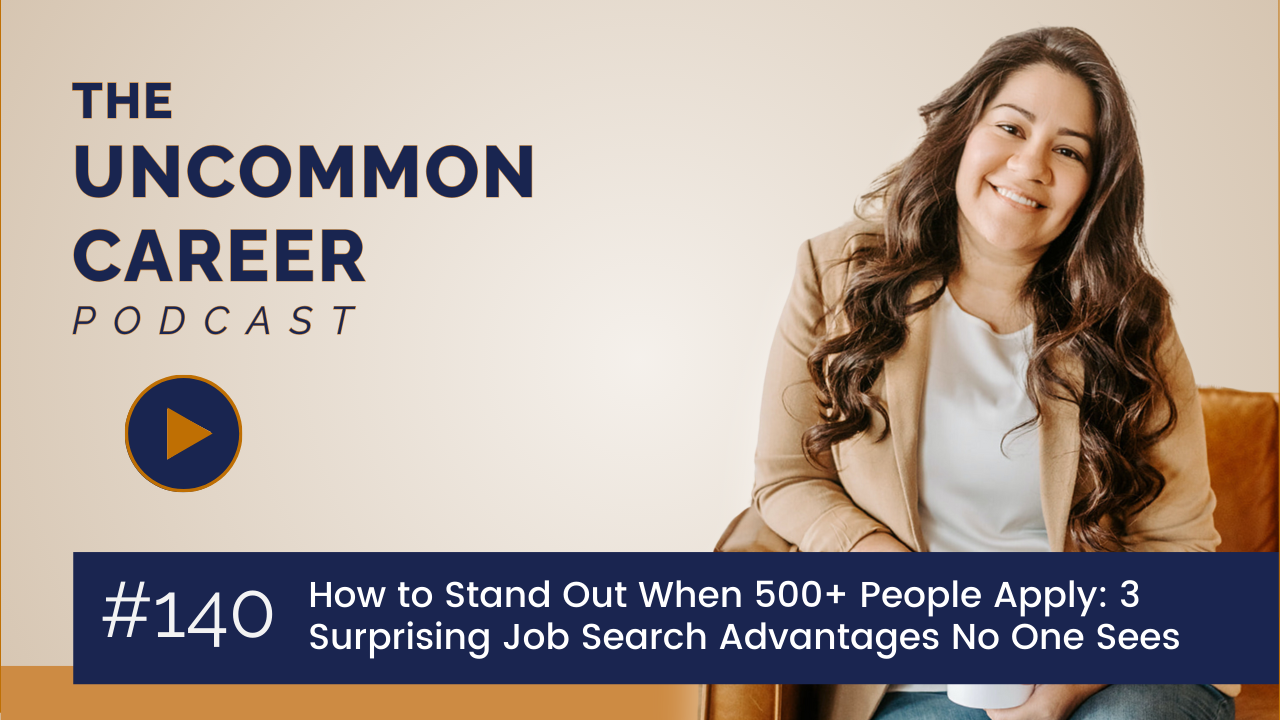108. 3 Steps to Strategize Your "Tell Me About Yourself" Interview Response
Apr 22, 2025
3 Steps to Strategize Your “Tell Me About Yourself” Interview Response
Some questions in interviews feel deceptively simple. “Tell me about yourself” tops that list. It’s easy to assume it’s just a warm-up—no pressure, no stakes. But in reality, this is one of the most high-impact moments of the entire interview.
First impressions are formed in seconds. A Yale study showed that snap judgments happen in as little as 10 seconds, and those judgments can influence not only hiring outcomes but even the salary a candidate is offered. This isn’t about perfection—it’s about positioning.
The goal? To answer in a way that creates trust, connection, and interest right from the start.
Here’s how to break down and build up a powerful “tell me about yourself” response—one that sets the tone and gives the interview a strong, strategic start.
|
Listen on your favorite podcast app: |
| |
Step 1: Target the Role with the Big Picture in Mind
Begin by identifying the core problem the role is designed to solve. This is the lens through which every part of the response should be filtered.
-
Pull up the job posting and read between the lines. What’s the big issue the role is meant to address?
-
Every role, regardless of industry, solves a problem. For some, it’s about optimizing processes. For others, it’s improving customer experience, preventing risk, or driving innovation.
-
Think about what would happen if the role didn’t exist. The answer points to the core problem.
For example...
An editor may seem like a support role—but remove that person, and what follows is a flood of errors, inconsistencies, compliance issues, and a damaged brand. The editor is not just reviewing grammar—they're protecting accuracy, credibility, and public trust.
Now, list three key outcomes or goals that contribute to solving that core problem.
These might be:
-
Documenting style guides
-
Streamlining revision processes
-
Maintaining accuracy above 98%
Once the big-picture problem and three measurable goals are defined, the rest of the response becomes much easier to shape.
Step 2: Prime the Interviewer with Compelling Highlights
This is where storytelling begins—but not in a long-winded or chronological way.
Think of it as giving a guided tour through the resume, with strategic detours toward key accomplishments.
Start by pulling a “hook” from each relevant story:
-
What’s the most impressive part?
-
What transformation occurred?
-
What was the scale, scope, or complexity?
These hooks don’t have to be full stories—they’re teasers that build curiosity and confidence.
Example phrases:
-
“While managing a portfolio of 20 projects per week, I maintained a 99% accuracy rate.”
-
“At Company X, I developed 15 style guides that are still in use today across multiple departments.”
Ideally, highlight accomplishments from different stages: an earlier role, a mid-career moment, and a recent win. This shows progression and consistency.
Keep the focus tight.
It’s not about reliving the resume—it’s about proving, early on, that this role is the natural next step.
Step 3: Anticipate Their Questions and Desires
Every hiring manager enters the interview with a mix of curiosity and caution.
The fastest way to build trust is to subtly address both.
Start by reviewing the resume and application materials from their point of view. What might raise questions?
Common employer thoughts might include:
-
“Why is there a gap between 2023–2024?”
-
“This candidate seems overqualified—are they stepping down?”
-
“Is there a reason they’re pivoting industries?”
Rather than ignoring these concerns, weave in simple context that reassures.
Example:
-
“Over the past year, I’ve focused on upskilling through certification programs in X and Y while preparing for a pivot into this role.”
Now flip the lens.
What is the employer hoping to find?
-
Go back to the job description—what’s listed under “preferred” or “nice-to-have”?
-
Highlight a skill or experience that aligns with one of those preferences, even briefly.
-
If the hiring manager is known (via LinkedIn or company bio), research what they value. Tailor the phrasing or examples to speak their language.
Finally, consider what value is brought that might set this application apart:
-
A second language
-
An industry-specific certification
-
A hybrid background (like law, counseling, or engineering) that offers added perspective
-
A unique soft skill honed through less traditional experience
Anticipating both concerns and aspirations builds credibility and humanizes the conversation.
What About Ageism? Reframing the Question
Age often comes up—not directly, but as an unspoken concern about energy, flexibility, or pace. Rather than addressing age itself (which shouldn’t be discussed in interviews), address the underlying assumption.
Ways to counter quietly:
-
Show drive and recent accomplishments.
-
Talk about future plans, ongoing growth, or a recent learning initiative.
-
Reinforce adaptability with examples of leading diverse teams or navigating change.
Position experience as a competitive edge. It’s not about years—it’s about value.
Let the response say: “There’s still more impact to be made here.”
Putting It All Together
In a standout “tell me about yourself” response, three things happen:
-
The employer hears a story that’s already aligned with their needs.
-
They see a candidate who knows the value they bring.
-
They feel more confident about what comes next.
So take the time to:
-
Clarify the problem being solved
-
Highlight the most relevant accomplishments
-
Address questions before they’re even asked
This isn't just an opening line. It’s a positioning strategy.
And it’s one of the strongest chances to shift the entire tone of the interview in a more confident direction.
Final Thoughts
A powerful “tell me about yourself” isn’t long.
It’s layered. It shows readiness, relevance, and reliability in under two minutes.
And best of all—it’s fully within your control.
So take the time to prepare it well.
There’s more influence in that opening moment than most realize.
And when it’s done right, it doesn’t just answer a question—it opens a door.

Follow-Up Episode:












